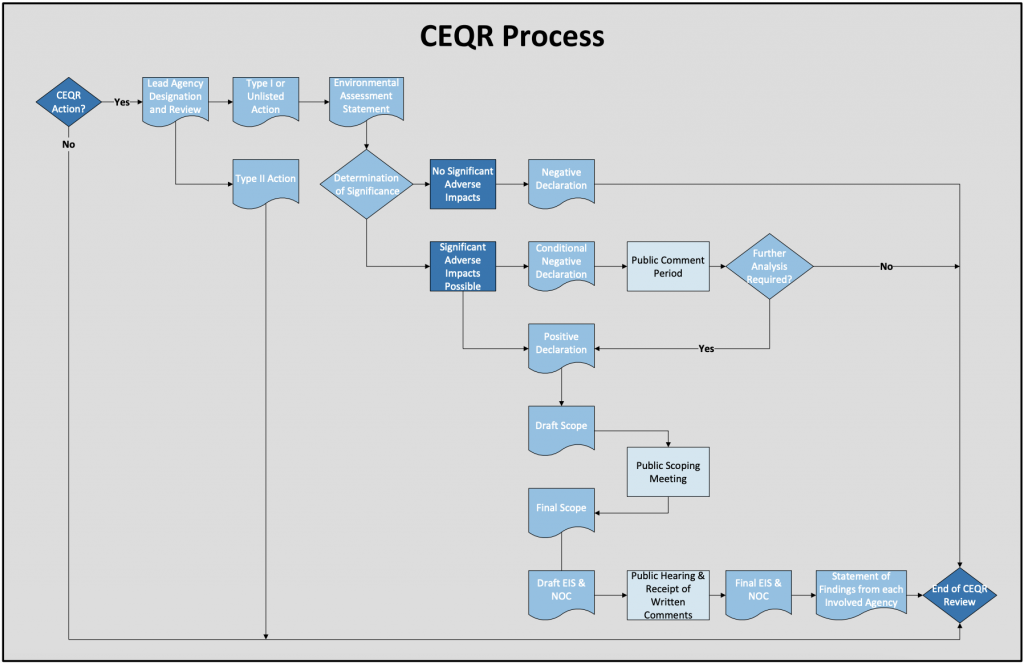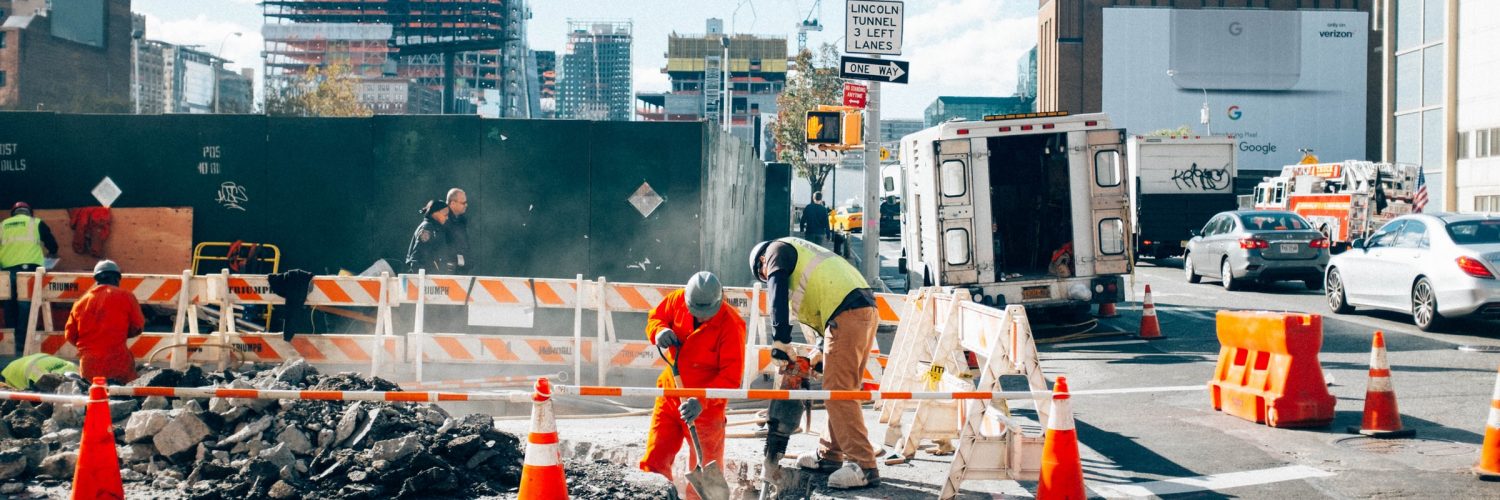Environmental Impact Statements (EIS) can be described as executive summaries of the environmental (both to the physical land and to the societal environment) effects that a proposed development project will have on its surroundings.
The Basics
Under NYC law, EIS are required for the majority of discretionary land use actions that are voted on by the City Planning Commission (CPC). These discretionary actions include:
- Zoning district changes, AKA rezonings
- City, state or federal capital projects (things like fire houses, libraries and sewage treatment plants)
- Urban renewal plans (unlike rezonings, Urban Renewal Law does not designate use but rather allows the city to acquire property and then sell or lease it for redevelopment)
- Major concessions (when private entities use city-owned land for public uses like marinas, sports arenas, and parks)
Projects that do NOT require EIS are called “Type II Actions” and include minor structures such as garages or home swimming pools, rebuilding or replacing facilities in kind on the same site, and routine activities of educational institutions.
EIS come out of the City Environmental Quality Review (CEQR) process, which is a disclosure process mandated by the State Environmental Quality Review Act (SEQR).
According to the Mayor’s Office of Environmental Coordination (MOEC), the CEQR process is triggered if any of the following questions are answered YES:
- Does the project need discretionary approvals or permits from any city agency?
- Does the project need city funding?
- Is the project being directly undertaken by a city agency?
Check out Marketproof New Development for the most information anywhere on NYC condos.
The CEQR Process

The diagram above outlines the step-by-step process for CEQR. First, the CEQR lead agency must be determined. For zoning amendments, the New York City Department of City Planning, acting on behalf of the City Planning Commission, is the CEQR lead agency. This is the most common scenario. Depending on the type of application, the lead agency can also be the Department of Housing Preservation and Development (HPD), the Department of Corrections (DOC) or the Office of the Deputy Mayor (DME).
It’s important to note that the environmental review process allows for public review and comment. It’s also, for the most part, synchronized with the ULURP process.
Step 1: Environmental Assessment Statement (EAS)
This is an in-depth document (often 100 or 200+ pages) prepared by a private entity (usually an environmental consulting or engineering firm) for the applicant to be presented to the DCP. The EAS outlines the project and any presumed environmental effects. For some projects that will clearly require an EIS, this step is bypassed.
Step 2: Determination of Significance
Using the EAS, the lead agency decides whether any adverse environmental effects warrant further investigation. If the answer is no, a negative declaration is issued. Another possibility is a conditional negative declaration, where the applicant agrees to mitigate any effects. If the answer is yes, a positive declaration is issued, which requires an EIS to be undertaken before the ULURP application can be completed.
Step 3: Draft Scope of Work
Within 15 days of a positive declaration, the lead agency must issue a draft scope of work to the applicant “which details the topics to be addressed in the EIS, the methods of analysis to be used, and possible alternatives to mitigate or eliminate potential significant impacts of the proposed action,” according to DCP.
Step 4: Public Scoping Meeting
A public meeting must be held within 30 to 45 days, where the EAS and draft scope of work are circulated to any affected and/or interested parties such as community boards and local elected officials.
Step 5: Final Scope of Work
Based on the public meeting feedback, the lead agency issues a final scope of work.
Step 6: Draft Environmental Impact Statement (DEIS)
Like the EAS, this in-depth document is prepared by a private entity for the applicant to be presented to the DCP. The DEIS is even longer and more complex and includes technical analyses, mitigation measures, and feasible alternatives.
Step 7: Notice of Completion
When the DEIS is deemed satisfactory by the lead agency, a Notice of Completion must be issued to MOEC, the state Department of Environmental Conservation, the applicant, all involved agencies, applicable borough presidents and community boards, and all persons who request such notice. The notice specifies the period for public review and comment.
Step 8: Public Review Process
The lead agency usually has 15 to 60 days from the DEIS completion to hold a public hearing on the application. In cases where the CPC is the lead agency, the ULURP meeting may serve this purpose.
Step 9: Final Environmental Impact Statement (FEIS)
Based on the public review process, the DEIS is finalized to include public commentary, responses from the lead agency, any revisions, and a written agreement on mitigation measures.
Step 10: Notice of Completion
When the FEIS is deemed satisfactory by the lead agency, a Notice of Completion must be issued to all those who received the DEIS.
Step 11: Statement of Findings
The notice of completion triggers the lead agency to release a Statement of Findings based on a critical analysis of the FEIS. The public and relevant agencies must be given 10 days to consider the FEIS. Once the lead agency adopts the findings, the CEQR process has ended.
The EIS Specifics
As outlined by the New York State Department of Environmental Conservation, an EIS must include:
- Description of the action, including its need and benefits
- Description of the environmental setting and areas to be affected
- An analysis of all environmental impacts related to the action
- An analysis of reasonable alternatives to the action
- Identification of ways to reduce or avoid adverse environmental impacts
As outlined by DCP, topics that may be included in an EIS include:
- Land use, zoning and public policy
- Socioeconomic conditions
- Community facilities and services
- Open space
- Shadows
- Historic resources
- Urban design / visual resources
- Neighborhood character
- Natural resources
- Hazardous materials
- Infrastructure
- Waterfront Revitalization Program
- Solid waste and sanitation
- Energy
- Traffic and parking
- Transit and pedestrians
- Air quality
- Noise
- Construction impacts
- Public health
The public can view all Draft and Final Environmental Impact Statements here. The public can also search through all environmental reviews on the city’s CEQR Access portal.
+++
Learn more about NYC land use process here:
This article is not an official New York City resource. For all questions regarding the environmental review process, call 311 or review the 2021 CEQR Technical Manual.
Marketproof New Development



